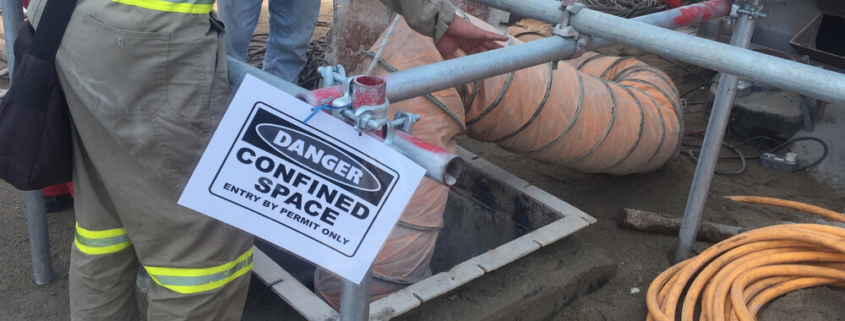OSHA Guidance on Workplace Ventilation
Ensuring adequate ventilation in the workplace can help to reduce the risk of worker illness and occupational disease. OSHA provides specific recommendations related to workplace ventilation. If you are a worker who believes that your rights related to proper ventilation have been breached, or if you have suffered an injury or illness as a result of improper ventilation in the workplace, please reach out to an OSHA Injury Attorney directly to learn more about your rights and how we can protect them.
OSHA Standards: Ventilation in the Workplace
Proper ventilation is key to maintaining or improving air quality in an indoor space, and OSHA has established ventilation standards for general industry, maritime, and construction. Because these guidelines vary slightly depending on industry type, it is important to familiarize yourself with the guidelines specific to the industry in which you work, or to consult with an attorney.
General industry
General industry regulations related to ventilation are found in Standard Number 1910.94. A few of these regulations include:
- When exhaust dust cannot be controlled by enclosure or exhaust ventilation, particulate filter respirators may be used for short, intermittent dust exposure;
- A local exhaust ventilation system shall be provided and used wherever dry grinding, dry polishing, or buffering is performed; and
- Ductwork must meet the requirements specified throughout the standard.
The above list is far from inclusive and should be thoroughly reviewed by all general industry employers.
Maritime
Regulations related to ventilation for maritime workers are found in Standard Number 1915.51 and 1918.94, the former of which addresses ventilation requirements for welding, cutting, and heating, and the latter of which addresses ventilation and atmospheric conditions in general, including ventilation with respect to carbon monoxide, fumigated grains, grain dust, and more.
The ventilation requirements for welding, cutting, and heating hold that general ventilation should be of sufficient capacity to maintain welding fumes and smoke within safe limits, and that local exhaust ventilation must also be of sufficient capacity and able to remove fumes and smoke at the source. General ventilation must be provided whenever welding, cutting, or heating is performed in confined spaces.
The second standard requires that if natural ventilation is inadequate to keep carbon monoxide concentrations within allowable limits, supplementary means must be used.
Construction
Construction industry ventilation requirements are addressed in Subpart 1926.57. Essentially, this section holds that any time that “fumes, mists, vapors, or gases” exist or are produced during construction, their levels and concentrations cannot exceed certain limits (found in Section 1926.55(a)). In order to ensure that concentrations do not exceed the set limits, ventilation may be used and, if it is used as a control method, it must be installed and operated according to certain requirements.
Section 1926.57(f)(4)(i) indicates that the “construction, installation, inspection, and maintenance” of exhaust systems must conform to the requirements set in the American National Standard Fundamentals Governing the Design and Operation of Local Exhaust Systems.
Ventilation During COVID
In addition to the general ventilation requirements addressed above, OSHA has also issued COVID-19-specific ventilation guidelines for all industries. These recommendations include, but are not limited to:
- Ensuring that all HVAC systems are properly working and are fully functional;
- Redirecting personal fans to ensure that air is not blowing from one worker to another;
- Using HVAC filters that have a Minimum Efficiency Reporting Value (MERV) rating of 13 or higher;
- Considering the use of portable High-Efficiency Particulate Air (HEPA) fans and filtration systems;
- Using personal protective equipment (PPE) when changing air filters; and
- Keeping exhaust fans in bathrooms on and ensuring that they are fully functional.
Your Rights When Ventilation Requirements Are Breached
When proper ventilation is not employed, especially in high-risk injuries like construction and maritime, workers may be at risk of suffering short- and long-term complications, ranging from respiratory illnesses to cancers and more. If you believe that your employer is failing to provide proper ventilation that is consistent with OSHA requirements, you should consult with an attorney. An attorney can guide you through the process of filing an OSHA claim, as well as pursuing workers’ compensation insurance benefits if you have been injured or have developed an occupational disease.
OSHA Injury Attorney’s Mission
The goal of our OSHA Injury Attorneys is to make sure that workers have access to information about their rights and how to stay safe in the workplace. When workers’ rights are breached, it is important that they seek the guidance of an attorney who can provide guidance and legal support in helping workers pursue damages and recover compensation. If you have concerns about your employer’s failure to meet ventilation requirements, or if you have been injured on the job, please complete our contact form and we will forward your information to a qualified workplace injury attorney.




Leave a Reply
Want to join the discussion?Feel free to contribute!